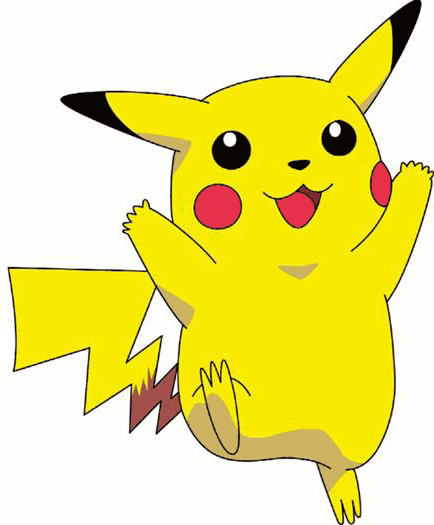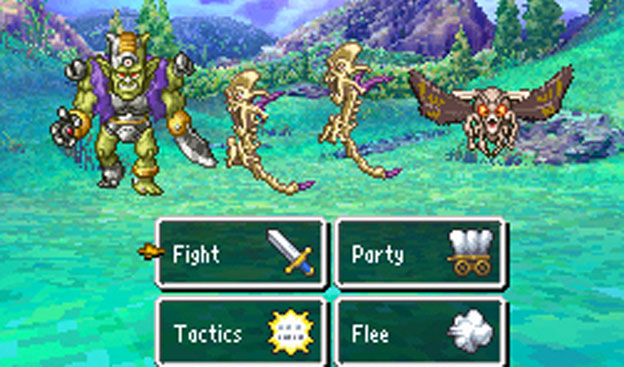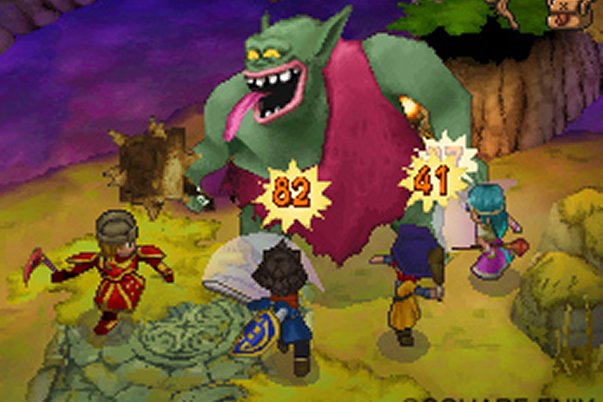Last updated on January 22, 2013
I’ve had an aversion to plugging my “List” entries full of Nintendo games; they’d take up nearly all the slots. They represent the best in gaming, to me at least, but I think everyone agrees that Nintendo does something special and ineffable that makes their games so exemplary. The innumerable little details that make games tick are refined and polished to a seeming level of absurdity, elements that could only ever come from a Japanese development company. Even when they release what feels like the same game over and over again, it never feels like a wasted purchase – the quality drips from its pores (it takes time to think of disgusting metaphors like that). Also, Conker’s Bad Fur Day counts as a Rare game, not as a home-brewed classic from the Land of the Rising Sun. Sorry Rare! You already had your time in the spotlight here at Theology Gaming!
What to do, then? Well, I’ve got to pick one or it’ll feel rather anemic. Mario’s too cliche; Zelda rubs me the wrong way with every game after A Link to the Past. I like Star Fox 64, but I can’t see myself throwing that onto this list. Who doesn’t like Kirby Super Star? Still, it’s too easy in many respects to make The List (though, in advance: Kirby Super Star (***** stars)). If I had to pick one game out of a bevy of classics, it’d be Pokemon.

WHAT!? SERIOUSLY!? Out of all the excellent games Nintendo has replaced in its history, you pick the one about virtual cockfights and grinding? Oh, swell!
Hear me out: Pokemon’s the best game Nintendo ever made, bar none – that’s a strong statement, but certainly one for which a case can be made. As a perfect blend of genres, it captures the essence of any great video game. Its experience remains accessible across a wide spectrum of players, and the game remains on the best-seller list every year it comes out with a new game. There’s even a Pokemon Company that exists independently of Nintendo and has giant department stores. STORES! BIG STORES! The merchandising behemoth never stops! Popularity doesn’t make the game, though. Take a close look at the game’s mechanics.
And, in true seemingly tangential tradition, I’m going to talk about a completely different game series. First, you’ll notice the intense similarity to Dragon Quest. In simplest terms, Dragon Quest never strays far from its traditional roots. How do you save the kingdom? Fight the big monster. How can you fight him? Get stronger. How do you get stronger? Grind and kill lots of monsters to get new equipment so you can kill bigger monsters. The cycle repeats and moves on. Dragon Quest, though it sticks with this exact formula through thick and thin, continues its dominance over the JRPG scene, less a genre magnate and more a cultural phenomenon. Partly, it transcends its video games trapping through accesibility – just about anybody on earth can play Dragon Quest. Sorting through menus doesn’t take a whole lot of work.

The challenge of Dragon Quest comes from tiny mental calculations for efficiency. How do I destroy this enemy party most effectively? Over time, you gain a general sense of the health of enemies in a particular region versus your party’s damage dealing capabilities. As such, you’ll find that there’s a right answer to nearly every enemy encounter to prevent damage and deal as much damage as possible. Unlike, say, Final Fantasy X or Lost Odyssey’s battle systems, you aren’t given the luxury of knowing what person on the battlefield goes first; that comes down to agility ratings (seriously, who ever looks at those, anyway?) and luck. You can perceive certain enemies will be faster, and even guarantee that enemies higher in level will be faster. All of this goes into the traditional turn-based action without any conscious thought on your part, and that’s why anyone can play it.
You don’t need to root through a list of increasingly complex spell effects or customizable party members. What’s good and what’s bad comes down to whatever makes your numbers go up and enemy numbers go down – that’s not a bad thing! Party members have clearly defined roles and perform said roles to the best of their ability and your intelligence. Still, any obstacles can be destroyed through sheer grinding – but that takes out part of the fun of dungeon plumbing. Dungeons don’t let you save, and that’s what gives them tension. Completely overwhelming the dungeon through time consumption never struck me as particularly fun, and that never usually happens in a Dragon Quest game.
However, what Dragon Quest always gives you is an incentive. What are you? A hero whose sole goal is to save the world. Your companions join you (or not, if you’re playing the first game) for different, yet similarly heroic reasons. No anti-heroes or brooding adventurers with unnatural hair formations or brooding nihilism here! You’re right, the enemies are wrong, and you’re here to save the day. Apparently, many agree that this story should eternally retell itself in just about every medium on the planet – whether done through violence or through love. Thus, on top of accessibility, Dragon Quest sets the player in a role that he/she WANTS to play. That’s quintessentially the first JRPG, and thus it makes sense that it remains a fixture on the game scene.
Furthermore, Dragon Quest fans continually pine for tradition in these regards. They don’t want a fancy revision to the formula. In fact, Dragon Quest IX began as a multi-player real-time action game. In a surprise to no one, Dragon Quest fans reacted with extreme hostility and disgust. Bring it back to how it was in VIII, they said! Keep it single player! Don’t mess around with a winning formula. I should note that Dragon Quest games MUST be released, in Japan, on a Sunday to avoid millions of people calling in sick for work. These aren’t decisions taken lightly by any means! So it was that IX became a turn based game once again, although saddled with a multiplayer component with wireless connectivity (Monster Hunter beat that gametype to the punch, though). This made Dragon Quest a social experience – again, though, this isn’t what people wanted. The same problem occured with Dragon Quest X, now an MMO and, seemingly, a huge flop for a Dragon Quest game – only a half million copies were sold. The subscription fee has much to do with that particular issue.

Of course, anyone might perceive this as an issue – the fans, obviously, prevent innovation in their favorite game through their unreasonable demands! You may well be right, but they have a point. What makes Dragon Quest like it is? Being a hero, gaining strength, overcoming odds, and seeing numbers go up. In a sense, it’s an experience DESIGNED for a single person to play, not a group. When Dragon Quest attaches itself to Western conventions, it loses that character that makes it so endearing – to spend time in a world at your leisure.
How does this relate to Pokemon in any sense? Nintendo, as per their pedigree, take existing concepts and mold them into a particular shape. In this case, Pokemon takes a host of cues from Dragon Quest while adding its own unique flavor: the social element. Dragon Quest, for all its attempts, can’t do this. The single-player experience had already been cast in stone from the moment Dragon Quest I became a massive success. The story elements, as well, must follow a set pattern – a person playing the game isn’t allowed many choices so much as they move through a set routine of fantasy cliches. As well, Japanese culture’s love of tradition dictates that, certainly, Dragon Quest should remain as similar as previous entries to become successful (a notable hallmark of the business field in said country). Thus, innovation, if it comes at all, only arrives in the tiniest of baby steps.
It’s a wonder that even DQIX became a success in spite of its social model while, at the same time, the PSP Monster Hunter literally dominated the handheld market. Handhelds seemed a fine format for most games – just not Dragon Quest! It became a bestseller mostly due to the increasing surge in handheld devices – phones, Nintendo DS, what have you – that made interactivity, however limited, a central and convenient component of progress in the game. Dragon Quest X tries to recapture that same success with mixed results; people were willing to accept IX on the handheld, but NOT the same style on a console system like the Wii. They want a traditional game like DQVIII that keeps the same single-player experience. That’s not to say there’s no social element in sharing their personal stories, but it’s a very different animal from Pokemon.
As for North America? We don’t much like Dragon Quest, although the recent success of DQIX’s million seller status in the United States and Europe lends hope. Handheld games win or lose on the playgrounds of America, and frankly Dragon Quest can’t win that battle; Pokemon has already won in the West by being more appealing from the onset. Why? Pokemon improves on the basic formula by introducing social elements, not only in meeting with other real people but also in its mechanical underpinnings.
